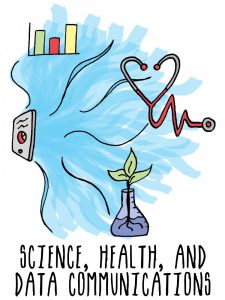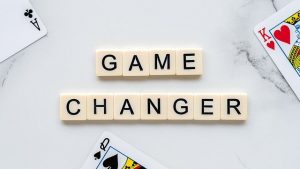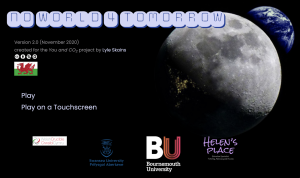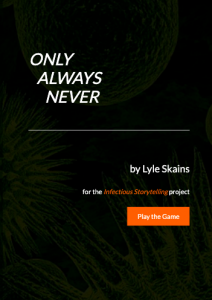 New publication: Using Interactive Digital Narrative for Health & Science Communication
New publication: Using Interactive Digital Narrative for Health & Science Communication
I’m delighted to announce that my new book publishes this week, as it provides an excellent example of the kinds of things we’re trying to do here at Bournemouth through the Sustainable Storytelling Lab and the Science, Health, and Data Communications Research Group: harness the power of narrative storytelling to effect positive behaviour change related to the UN SDGs. It also offers an overview of how two very interdisciplinary teams formed (thanks to a Crucible program) and established successful patterns of working, despite our vastly different spheres of expertise.
Book description:
Both the United Nations and the World Health Organization stress the need to address numerous increasingly urgent ‘global challenges’, including climate change and ineffectiveness of medication for communicable diseases.
Despite climate change resulting from human activity, most humans feel their contribution is minimal; thus any effort made toward reducing individual carbon footprint is futile. Likewise, individual patients feel their health is their own problem; current increases in outbreaks of formerly controllable diseases like measles and tuberculosis show that this is not the case. There is a dire need to instil a stronger sense of personal responsibility, to act as individuals to resolve global issues, and the pilot studies presented in Using Interactive Digital Narrative in Science and Health Education offer an entertainment-as-education approach: interactive digital narrative.
The researchers on these teams cross diverse disciplinary boundaries, with backgrounds in chemical engineering, microbiology, romantic studies, film studies, digital design, pedagogy, and psychology. Their approach in Using Interactive Digital Narrative in Science and Health Education to interdisciplinary research is discussed herein, as is the practice-based approach to crafting the interactive narratives for health and science communication and for specific audiences and contexts.
 I joined colleagues in FMC in launching the Science, Health, and Data Communications Research Group, a growing centre of cross-faculty BU researchers creating and researching public communications and education on pivotal topics such as climate change, dementia, mental health, COVID, sustainability, ecology, and more. We are hosting our
I joined colleagues in FMC in launching the Science, Health, and Data Communications Research Group, a growing centre of cross-faculty BU researchers creating and researching public communications and education on pivotal topics such as climate change, dementia, mental health, COVID, sustainability, ecology, and more. We are hosting our 
 I invite you to join us in developing our proposal for Sustainable Storytelling for Science & Health as a
I invite you to join us in developing our proposal for Sustainable Storytelling for Science & Health as a 














 3C Event: Research Culture, Community & Cookies – Tuesday 13 January 10-11am
3C Event: Research Culture, Community & Cookies – Tuesday 13 January 10-11am Dr. Chloe Casey on Sky News
Dr. Chloe Casey on Sky News Final Bournemouth University publication of 2025
Final Bournemouth University publication of 2025 On Christmas Day in the Morning…
On Christmas Day in the Morning… New Nepal scoping review on maternal & neonatal health
New Nepal scoping review on maternal & neonatal health ECR Funding Open Call: Research Culture & Community Grant – Application Deadline Friday 12 December
ECR Funding Open Call: Research Culture & Community Grant – Application Deadline Friday 12 December MSCA Postdoctoral Fellowships 2025 Call
MSCA Postdoctoral Fellowships 2025 Call ERC Advanced Grant 2025 Webinar
ERC Advanced Grant 2025 Webinar Horizon Europe Work Programme 2025 Published
Horizon Europe Work Programme 2025 Published Update on UKRO services
Update on UKRO services European research project exploring use of ‘virtual twins’ to better manage metabolic associated fatty liver disease
European research project exploring use of ‘virtual twins’ to better manage metabolic associated fatty liver disease